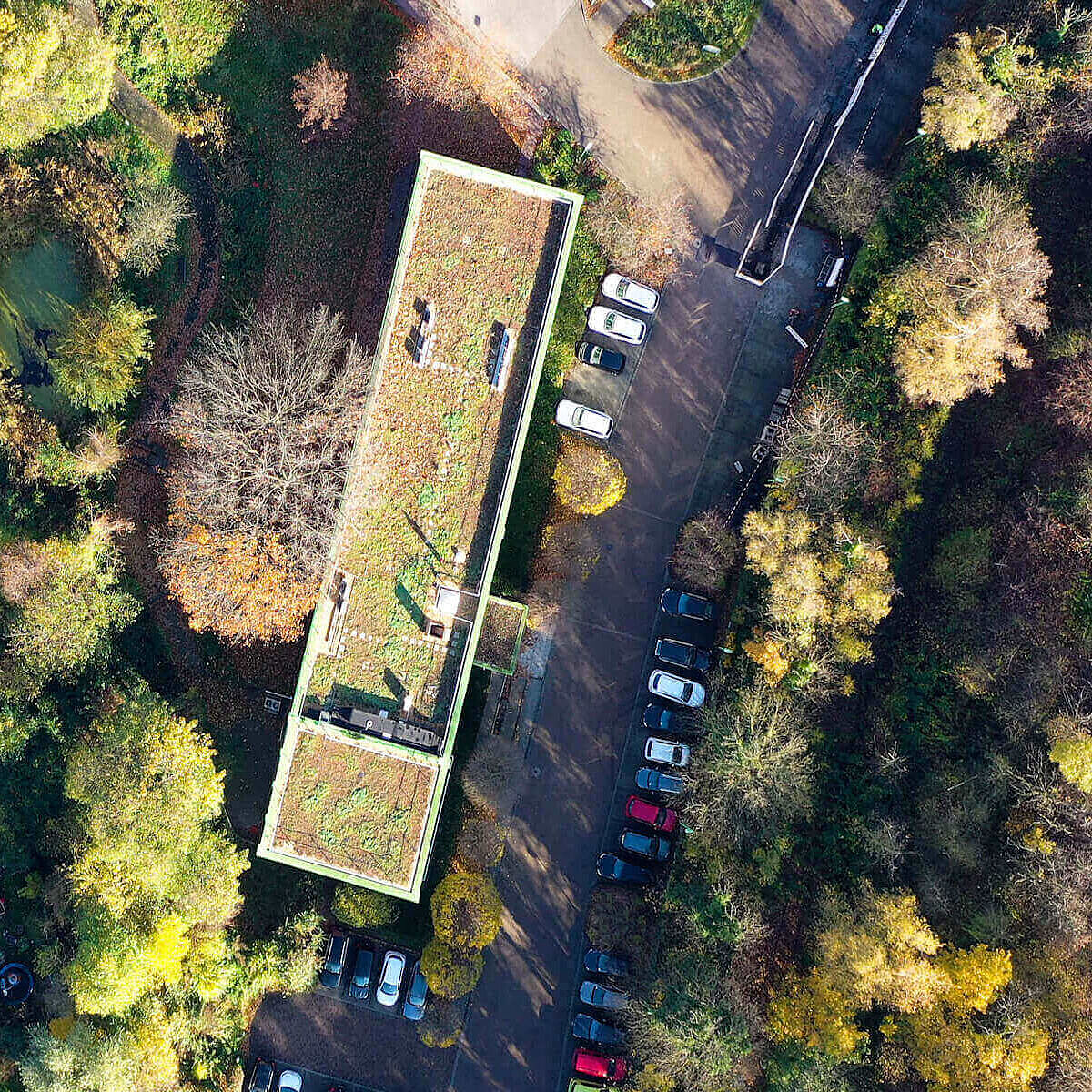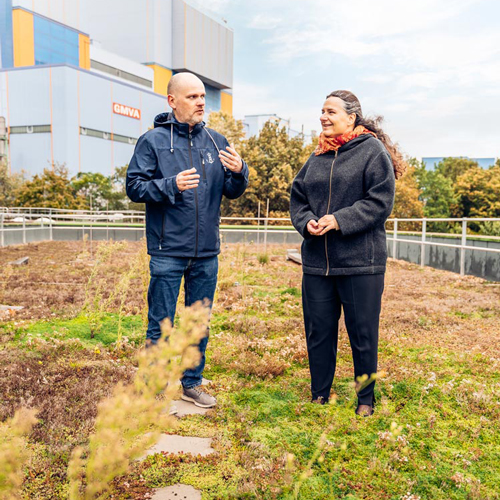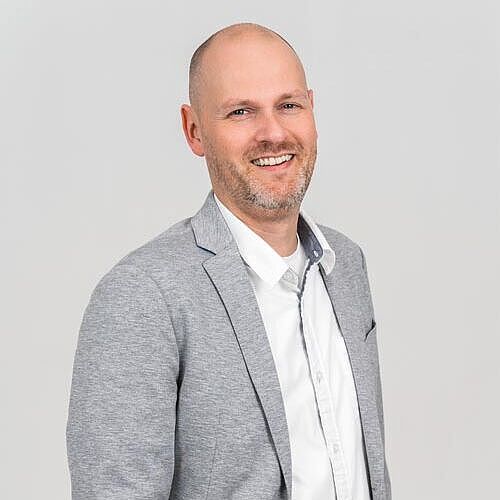Adress
Buschhausener Straße 160
46049 Oberhausen

Turning grey into green: The GMVA waste incineration plant in Oberhausen is setting a good example for adapting to climate change in the region.
The vegetation on the roof and facade of the building absorbs rainwater, reducing the load on the sewer system and providing evaporative cooling, which the surrounding area benefits from in the summer.
The facade of the faded cooling tower disappears behind lush green plant tendrils and the buzzing of numerous insect species can be heard on around 3,000 square metres of green roof space of surrounding buildings. At first glance, the site looks like a “lost place” that nature is reclaiming, but in reality it is anything but. The GMVA waste incineration plant in Oberhausen is actually one of the largest in Germany. Around 700,000 tonnes of waste are incinerated there every year.
The climate change adaptation measures in the form of extensive green roofs and facades, as well as a flower meadow with beehives, were initiated in 2020 by then Managing Director Dr Angela Sabac-el-Cher. She drove the project forward in close cooperation with the Klima.Werk and the city of Oberhausen.
“A large green roof like the one created here isn't just aesthetically pleasing, it also contributes to the climate resilience of our city,” explains Maik Ballmann, city coordinator of the Klima.Werk in Oberhausen and head of the city's climate protection department. “Among other things, the green roofs ensure that heavy rainfall can be retained and does not have to be processed immediately by the overloaded sewer system. It also stores CO2 and binds fine particles”.

The measures also benefit employees, since the green roof doesn't heat up as much in the summer and the environment is noticeably cooler due to increased evaporation. It serves as natural air conditioning. These are benefits that many sites, particularly in the Ruhr area, could benefit from. Given the large number of sealed industrial and commercial sites, green infrastructure needs to be further developed to avoid the urban heat island effect - especially in the light of climate change, which will lead to more extreme weather events in the future.
The green roofs and facades of the GMVA are the first official project of the Ruhr Conference project “Climate-resilient region with international appeal”. The extensive green roof technology was funded with around €240,000 by the North Rhine-Westphalia Ministry of the Environment and the Emschergenossenschaft. But how sustainable and high-maintenance is such a biotope in the middle of an asphalted industrial landscape? “Caring for the sedum plants is surprisingly simple,” says Maik Ballmann: “Basically, all it takes is for someone to check up on them once or twice a year and remove the roots of self-seeded trees. Fat hen is a member of the sedum family and is extremely undemanding and easy to care for”.
Wild bees and employees alike have come to appreciate the benefits of the all-year green roof, and the city coordinator hopes that other cities will follow suit:

The revegetation of the GMVA in Oberhausen has shown how well the interaction between the private and public sectors can work. Someone just has to take the first step.

Maik BallmannCity Coordinator of the Klima.Werk in Oberhausen
Buschhausener Straße 160
46049 Oberhausen
Copyright ©
Images: Klima.Werk/EGLV